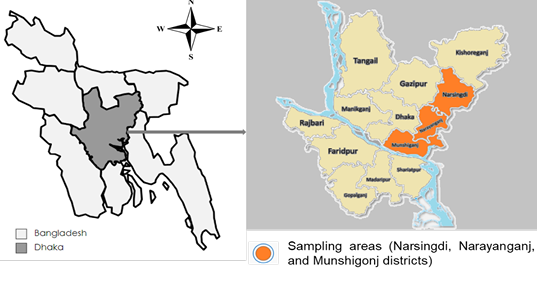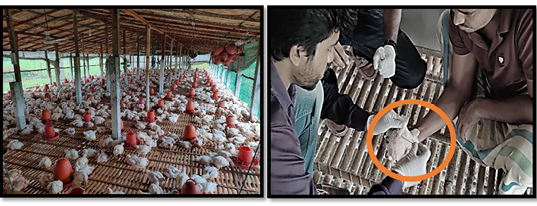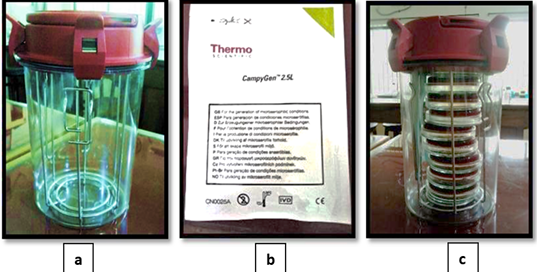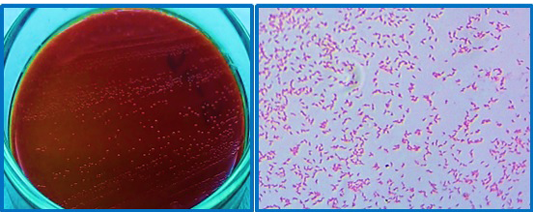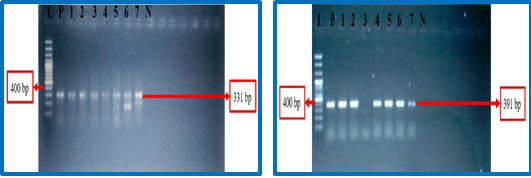Prevalence and Risk Factors of Campylobacter Colonization in Broiler Farms at Selected Districts of Dhaka Division, Bangladesh
Prevalence and Risk Factors of Campylobacter Colonization in Broiler Farms at Selected Districts of Dhaka Division, Bangladesh
Muhammad Al-Maruf1, Mahfuzul Islam2, Md. Rashedul Islam3, Syidul Islam1, Md. Sirazul Islam4, Md. Roknuzzaman Khan1, Md. Khairul Islam1, Md. Akib Zabed1, K. B. M. Saiful Islam1*
Study areas in Dhaka division (Munshigonj, Narayanganj, and Narsingdi districts) of Bangladesh.
Collecting of cloacal samples from the live broiler in the farms.
Anaerobic jar (a), CO2 sachet (b), and anaerobic jar containing plate and sachet (c).
Cultural and staining properties of Campylobacter spp. (A) Cultural Response: Good-luxuriant growth of Campylobacter spp.; (B) Gram’s staining of Campylobacter spp. isolate showing characteristic spiral, S-shaped bacteria.
UV visualization of multiplex PCR of lipid A gene (lpx) (a) C. jejuni showing 331bp (b) C. coli showing 391bp.
Overall prevalence of Campylobacter species in the study areas.




